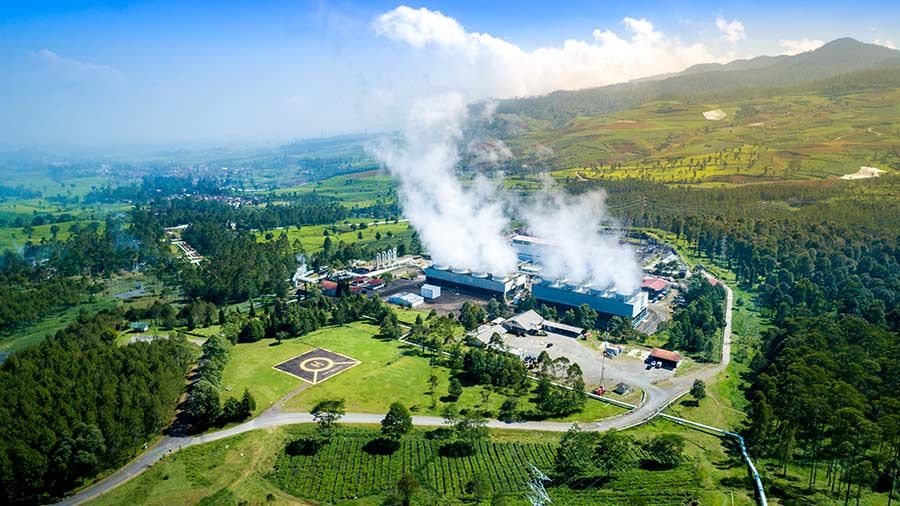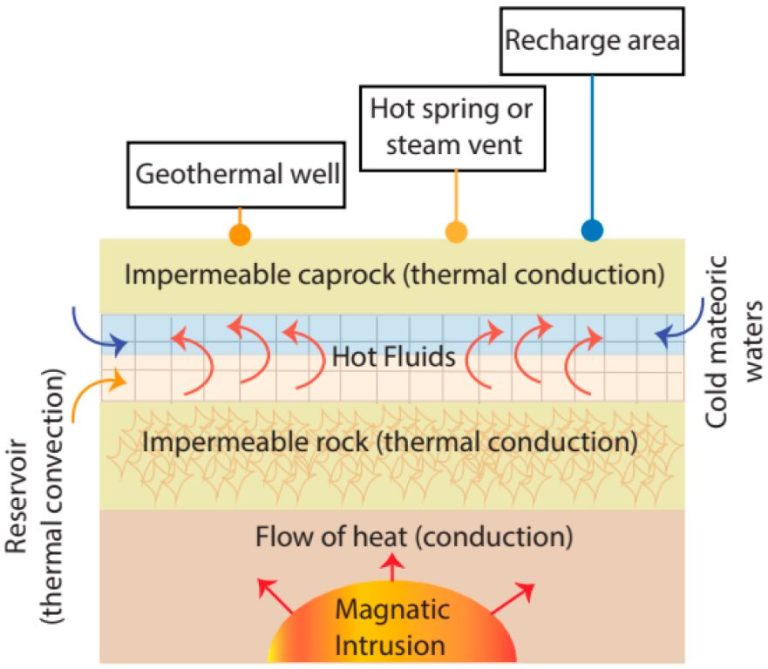What Are The Top 5 Countries That Use The Most Geothermal Energy?
Geothermal energy is a renewable energy source that utilizes the natural heat from the Earth’s interior to generate electricity and provide heating and cooling. The constant temperature below the Earth’s crust can be harnessed using geothermal technology to produce sustainable energy without carbon emissions.
Geothermal energy offers many benefits compared to fossil fuels. It is considered a clean, green energy and does not require burning fuels. Geothermal power plants emit little to no greenhouse gases. Geothermal heating and cooling systems also help reduce carbon emissions by replacing fossil fuel based systems. In addition, geothermal energy is available 24/7 as a baseload source of power.
In this article, we will be looking at the top 5 countries around the world that utilize the most geothermal energy. We will explore how much geothermal power each country produces, what factors make them top producers, and the benefits they gain from geothermal energy.
#5 – Turkey
Turkey has rapidly expanded its use of geothermal energy over the past two decades. The amount of electricity generated from geothermal sources has increased from 15 MW in 2004 to over 1,613 MW in 2020 [1]. Turkey ranks 5th in the world for installed geothermal capacity and generates over 3% of its electricity from geothermal sources [2].
There are over 1,500 thermal springs across Turkey with temperatures ranging from 20°C to 110°C. The western Anatolian region has been the primary area for geothermal development due to ideal subsurface conditions. However, new projects are expanding into other regions like central Anatolia and Thrace [3].
The Turkish government has set goals to reach 4,000 to 6,000 MW of installed geothermal capacity by 2023. This planned expansion will help Turkey reduce its reliance on imported fossil fuels and provide a sustainable domestic energy source for heating and electricity generation.
#4 – New Zealand
Geothermal energy is an important renewable energy source for New Zealand, providing around 18% of the country’s electricity in 2020 (MBIE). The majority of geothermal electricity generation comes from the Taupo Volcanic Zone in the central North Island, where there are 18 major geothermal fields and approximately 250 surface features like geysers and hot springs.
Geothermal power generation in New Zealand has grown steadily over the past decades. In 1990, geothermal energy accounted for less than 5% of total electricity generation. By 2000, this had grown to over 10%, and by 2010, geothermal provided over 15% of the country’s electricity needs (Wikipedia). The Wairakei geothermal power station, which opened in 1958 as the first major geothermal power station in the world, remains the largest in New Zealand with installed capacity of 192 MW.
With abundant geothermal resources, New Zealand is considered a global leader in geothermal energy utilization. Ongoing exploration and development of geothermal fields is expected to increase capacity further to help meet the country’s goal of 100% renewable electricity by 2030.
#3 – Iceland
Iceland is a global leader in geothermal energy utilization. According to Wikipedia, geothermal power accounted for 66% of Iceland’s total primary energy supply in 2016.
The country has taken advantage of its unique geological position along the Mid-Atlantic Ridge to develop extensive geothermal resources. Iceland has high-temperature hydrothermal resources capable of providing energy for both electricity generation and district heating.
According to the Atlantic Council, Iceland generates nearly 100% of its electricity from renewable sources, with 73% coming from hydropower and 27% from geothermal. The country has six major geothermal power plants generating about 665 MW of installed capacity.
Iceland’s district heating systems rely heavily on geothermal resources. The capital Reykjavik and surrounding municipalities get hot water for district heating from the Hellisheidi geothermal power plant, one of the largest in the world.
Geothermal energy has played a major role in Iceland’s economic development and transition to renewable energy. The country’s expertise in geothermal technology has also supported international export opportunities.
#2 – USA
The United States is the second largest user of geothermal energy in the world. Geothermal energy accounts for about 0.4% of total U.S. energy production and about 3.1 gigawatts of installed geothermal capacity as of 2019.
The western states, including California, Nevada, Utah, and Oregon have the highest levels of geothermal electricity generation due to availability of geothermal resources. California alone accounts for over 40% of U.S. geothermal energy production.
Geothermal energy usage in the U.S. has grown steadily over the past decades. Installed geothermal capacity has increased over 5 times since 1995. The United States Geological Survey estimates that by 2050, geothermal energy could provide up to 60,000 megawatts of baseload capacity in the U.S., meeting around 8-10% of national electricity demand.
The U.S. geothermal industry continues to invest in enhancing production through new technologies and drilling additional wells. With continued growth, geothermal power can play a major role in America’s renewable energy portfolio and energy independence.
#1 – Indonesia
Indonesia has the largest geothermal energy potential in the world, estimated at about 29 GWe, which is about 40% of the world’s total geothermal potential (Pambudi, 2024). As of 2022, Indonesia had installed geothermal capacity of 2.1 GW, accounting for about 12.5% of its total electricity generation (ASEAN Briefing, 2022).

Indonesia’s use of geothermal energy has grown significantly over the past decade. In 2012, Indonesia had about 1.3 GW of installed geothermal capacity, which grew to about 2 GW by 2017, and reached 2.1 GW by 2022 (Statista, 2023). The Indonesian government has set ambitious targets for geothermal development, aiming for 7 GW of installed capacity by 2025 as part of its goal to source 23% of its energy from renewable sources by 2025 (ASEAN Briefing, 2022).
Key government policies supporting Indonesia’s geothermal growth include feed-in tariffs for geothermal power and mandated purchases by the state-owned electricity company PLN. However, costs still remain higher compared to fossil fuels like coal. Ongoing challenges for further geothermal development in Indonesia include reducing project costs, upgrading transmission infrastructure, and obtaining financing (Pambudi, 2024).
Environmental Benefits
Geothermal energy provides significant environmental benefits compared to conventional fossil fuels. The top geothermal producing countries are able to reduce air pollution and carbon emissions by utilizing this clean, renewable energy source.
For example, research shows that Iceland’s use of geothermal power for 90% of its heating has helped the country achieve some of the cleanest air in the world. Geothermal plants in Iceland emit far less carbon dioxide, sulfur dioxide, and nitrogen oxide emissions compared to fossil fuel plants. According to the Geothermal Resources Council, the carbon footprint of geothermal plants can be as low as 6 grams of CO2 per kWh, whereas coal plants emit around 1,000 grams per kWh.
Similarly, studies have found that Indonesia’s increasing geothermal capacity is significantly reducing the country’s greenhouse gas emissions and helping it meet emissions targets under the Paris Agreement. Indonesia possesses around 40% of the world’s geothermal resources and ranks second globally in installed geothermal capacity.
The major geothermal countries are not only reducing air pollution locally but also making substantial contributions to mitigating global climate change through zero-emissions renewable energy generation from geothermal.
Economic Benefits
Geothermal energy provides significant economic benefits to the top geothermal producing countries. According to Unlocking the Potential of Geothermal Energy Investments, geothermal energy can provide affordable and reliable baseload power, which fuels economic development. The countries that utilize the most geothermal energy see direct economic gains in the form of investment, job creation, and energy cost savings.
For example, in the United States, the second largest producer of geothermal energy, the geothermal industry contributes $2.5 billion in GDP annually and provides nearly 25,000 jobs across the supply chain. The U.S. geothermal industry has also attracted over $800 million in private investment for new projects (Unlocking the Potential of Geothermal Energy Investments). Additionally, a report from the U.S. Bureau of Land Management found that geothermal development on public lands alone results in $40 million in economic output and supports 300 jobs every year.
Indonesia, the world’s leading geothermal energy producer, generates over $1.7 billion per year in direct economic benefits from geothermal projects, as well as over 28,000 jobs (Unlocking the Potential of Geothermal Energy Investments). Iceland, another major geothermal user, estimates that their geothermal industry accounted for over 26% of GDP and allowed electricity prices to remain relatively low and stable (Geothermal Energy in Iceland).
By taking advantage of indigenous geothermal resources, countries can gain energy self-sufficiency, price stability, and long-term economic growth. The top geothermal producing nations exemplify these benefits.
Future Outlook
Geothermal energy has significant potential for future growth globally as a renewable, sustainable energy source. The top geothermal countries are well positioned to continue expanding their use of this resource.
In the United States, geothermal capacity is projected to grow from 3.8 GW in 2020 to 5 GW by 2025. Major potential exists in western states like California, Nevada, Utah, and Oregon where geothermal resources are abundant. With supportive policies and technological advances, geothermal could provide up to 20 GW in the U.S. by 2050.[1]
Indonesia, already the world’s largest geothermal energy producer, has over 28 GW of undeveloped geothermal resources. The government has set goals to expand geothermal to 7.2 GW by 2025 and reach 23% of national electricity generation by 2050. This significant potential makes Indonesia crucial for geothermal advancement in Southeast Asia.[2]
Iceland is looking to expand its use of geothermal energy for electricity and heating. With abundant geothermal resources, the country aims to cut greenhouse gas emissions by 40% by 2030 through greater reliance on renewables like geothermal and hydropower.[3]
Globally, if geothermal technology continues advancing and new resources are tapped, geothermal generation capacity could grow over 26-fold, from 17 TWh in 2019 to 450 TWh in 2050. Realizing this potential will require supportive policies, public-private collaboration, and innovation to make geothermal more cost-competitive.[4]
Conclusion
In summary, Indonesia ranks as the top country in geothermal energy usage, followed by the USA, Iceland, New Zealand, and Turkey as the rest of the top 5. Geothermal energy represents a significant and growing share of renewable energy worldwide. The countries that utilize it most are able to tap into the earth’s internal heat for reliable, sustainable energy generation with minimal environmental impact.
The key takeaways are that geothermal energy is a clean, renewable source that provides consistent baseline power. Countries with substantial geothermal resources can develop them to reduce reliance on fossil fuels and emissions. While geothermal has high upfront costs, it pays off over the long-term and supports energy independence. Overall, the top geothermal countries demonstrate the viability and benefits of scaling up this technology globally.




